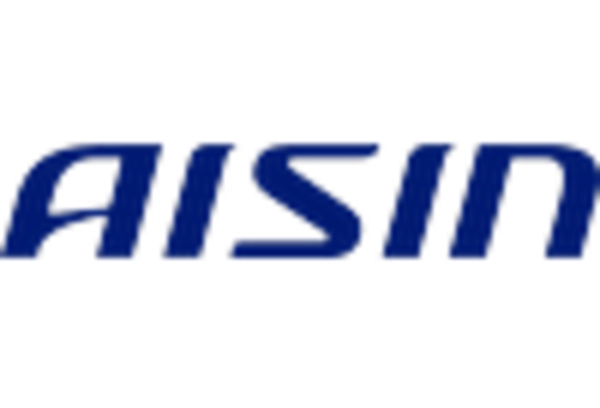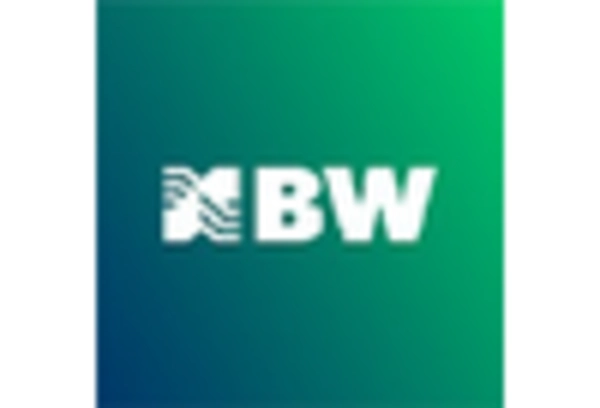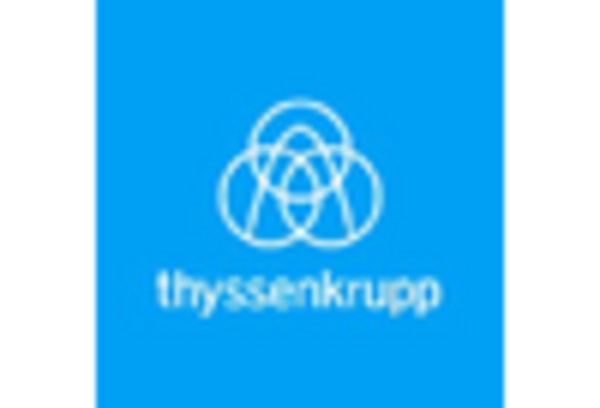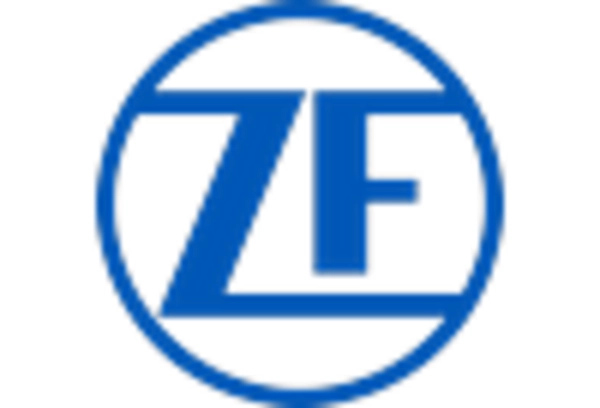Rising Adoption of Electric and Hybrid Vehicles
The Automotive Double Wishbone Suspension System Market is poised for growth as the adoption of electric and hybrid vehicles accelerates. These vehicles often require advanced suspension systems to accommodate their unique weight distribution and performance characteristics. The double wishbone design offers the flexibility needed to optimize handling and ride comfort, which is essential for electric vehicles that prioritize efficiency and performance. Market data indicates that the electric vehicle segment is expected to grow significantly, with projections suggesting a compound annual growth rate of over 20% in the coming years. This shift towards electrification is likely to drive demand for sophisticated suspension systems, including double wishbone configurations.
Technological Advancements in Suspension Systems
The Automotive Double Wishbone Suspension System Market is benefiting from rapid technological advancements that enhance the performance and efficiency of suspension systems. Innovations such as adaptive suspension technologies and materials science improvements are enabling manufacturers to create lighter and more responsive double wishbone systems. These advancements not only improve vehicle dynamics but also contribute to better fuel efficiency and reduced emissions. As automakers increasingly integrate these technologies into their designs, the demand for double wishbone suspension systems is expected to rise. Market analysis suggests that the integration of smart technologies into suspension systems could lead to a substantial increase in market share for double wishbone configurations, as they offer superior adaptability to varying driving conditions.
Increasing Focus on Vehicle Stability and Handling
The Automotive Double Wishbone Suspension System Market is experiencing a notable increase in demand due to the growing emphasis on vehicle stability and handling. This suspension system is recognized for its superior performance in providing better control and comfort, particularly in high-performance and luxury vehicles. As consumers become more discerning about ride quality, manufacturers are increasingly adopting double wishbone designs to enhance driving dynamics. According to recent data, vehicles equipped with this suspension system demonstrate improved cornering capabilities and reduced body roll, which are critical factors for performance-oriented consumers. This trend is likely to continue, as automakers strive to meet the expectations of a market that values both performance and safety.
Growing Consumer Preference for Off-Road Capabilities
The Automotive Double Wishbone Suspension System Market is witnessing a surge in interest due to the growing consumer preference for off-road capabilities in vehicles. As outdoor recreational activities gain popularity, manufacturers are responding by equipping SUVs and trucks with advanced suspension systems that can handle rugged terrains. The double wishbone design is particularly advantageous in off-road applications, as it provides better wheel articulation and ground clearance. Recent market data indicates that the off-road vehicle segment is expanding, with a significant increase in sales of SUVs and trucks. This trend is likely to drive the adoption of double wishbone suspension systems, as they are well-suited for enhancing off-road performance.
Regulatory Push for Enhanced Vehicle Safety Standards
The Automotive Double Wishbone Suspension System Market is influenced by a regulatory push for enhanced vehicle safety standards. Governments worldwide are implementing stricter regulations aimed at improving vehicle stability and crashworthiness. The double wishbone suspension system is recognized for its ability to provide better control during emergency maneuvers, thereby contributing to overall vehicle safety. As manufacturers strive to comply with these regulations, the demand for advanced suspension systems is expected to rise. Market Research Future suggest that the increasing focus on safety features will likely lead to a greater adoption of double wishbone designs, as they offer superior performance in maintaining vehicle stability under various driving conditions.


















Leave a Comment